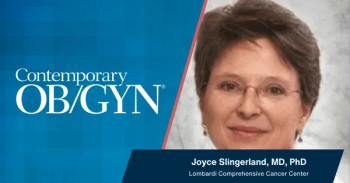
Can Hormone Therapy Help Prevent Loss of Lean Body Mass?
After reaching menopause, women experience body composition changes such as loss of lean body mass, increase in body fat mass, and a shift to central or android fat distribution-all of which are associated with negative health issues. Researchers have hypothesized that hormone therapy might help counter these changes, but thus far studies have been limited by size, type (ie, observational), or length of intervention.
After reaching menopause, women experience body composition changes such as loss of lean body mass, increase in body fat mass, and a shift to central or android fat distribution-all of which are associated with negative health issues. Researchers have hypothesized that hormone therapy might help counter these changes, but thus far studies have been limited by size, type (ie, observational), or length of intervention.
To further explore the effects of hormone therapy (ie, estrogen plus progestogen therapy [EPT] or estrogen therapy [ET] alone) on body composition, Dr Jennifer W. Bea of the Arizona Cancer Center and colleagues leveraged data from the Women’s Health Initiative (WHI) estrogen plus progestogen therapy trial-the longest and largest randomized controlled study of the effects of postmenopausal hormone therapy in the United States. Data in the study were collected between 1993 and 1998 and across 40 medical institutions in the United States.
In the study, patients were randomized to one of two arms: either estrogen plus progestogen therapy (0.625 mg/d conjugated equine estrogens plus 2.5 mg/d medroxyprogesterone acetate daily; n = 543) or control (n = 471) and estrogen therapy alone (0.625 mg/d conjugated equine estrogens daily; n = 453) or control (n = 474). The WHI researchers measured height, weight, and waist circumferences. Bone mineral density, lean soft tissue mass, fat mass, percentage of fat mass, and lean body mass were calculated based on measurements performed by DXA scans. Throughout the WHI study, researchers collected data on energy intake, other dietary variables, energy expenditure, ethnicity, smoking and alcohol habits, physical function, prior hormone therapy use, and falls and fractures.
The WHI found similar body composition measures, mean age, and energy intake in the active and placebo groups for both the ET and EPT trials. However, they noted higher energy expenditure and a higher percentage of women with physical function scores greater than 90 in the EPT trial versus the ET trial. Similarly, body mass index and waist circumference were significantly lower in the EPT trial as compared to the ET trial.
Over 6years of the trial there was no significant change in the fat mass in any of the groups. While lean body mass was significantly less in those participants receiving active hormone therapy (both for ET and EPT) than those on placebo after 3 years of the study, those receiving active treatment actually lost more lean body mass than those on placebo during years 3 through 6 of the study. In essence, the differences negated each other with the overall effect seen to be null.
In looking at fall and fracture risk, the researchers found nonsignificant reductions in risk for both falls and fractures between years 3 and 6. However, the researchers found no evidence of a relationship between the preservation of lean body mass up to year 3 and subsequent annual falls and fractures between years 3 and 6. The researchers noted that since hormone therapy may improve strength, this may in turn lead to a reduced risk of falling and fall-related fractures, and they suggest this as an avenue for further research.
“This substudy is an important addition to the previously published 3-year analysis of EPT effects on body composition, which included baseline and year 3 measurements only,” Bea and colleagues noted. “Herein we were able to demonstrate that ET alone conferred similar lean body mass benefits at 3 years. This 6-year analysis also allowed us to examine trends in HT effects on lean body mass.”
More Information
Related Content
Reference
Bea JW, Zhao Q, Cauley JA.
Newsletter
Get the latest clinical updates, case studies, and expert commentary in obstetric and gynecologic care. Sign up now to stay informed.








